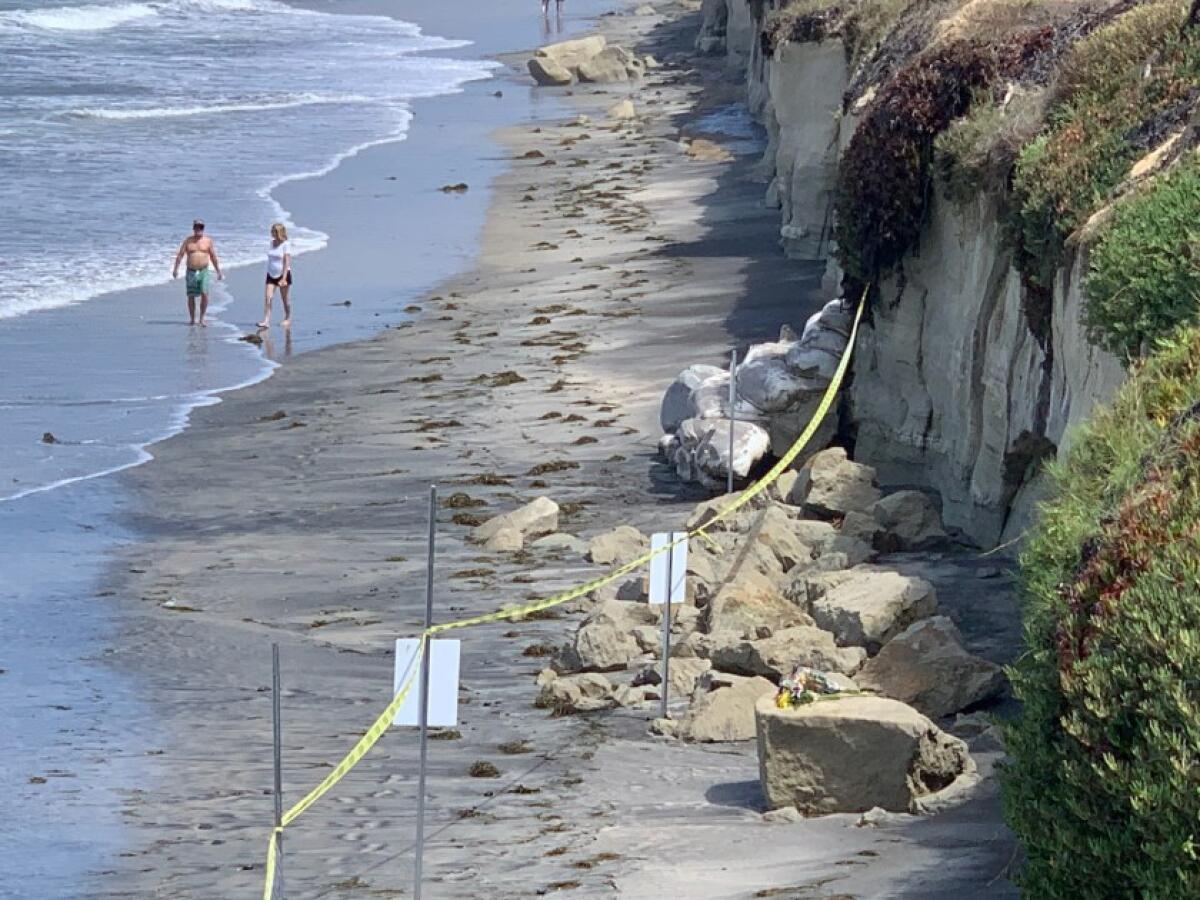Letters to the Editor: Ocean bluffs collapse often. Don’t sit underneath them

- Share via
To the editor: I walk on the beach very often (“Deadly Encinitas cliff collapse is a warning sign for California coast,” Aug. 5).
When I encounter people sitting under the lee of the bluff, I walk up to them and ask if it would be OK if I took a “before photograph.” After a few moments they ask why I would want a “before” photo of them.
I keep a handy photo on my phone of a 5-ton collapse of rock, clay, sand and vegetation that had recently fallen. I explain some of the interesting layers of clay and sand and black bands of oil spills over eons. People love to learn how to “read” geology.
Walking back a few minutes later, I notice that none of the people are sitting near the bluff.
Kenneth Warfield, Isla Vista
..
To the editor: Much of our native cliffside flora in coastal California has been killed off and taken over by ice plant, an invasive plant from South Africa. This problem is evident in photos of the collapsed bluff in Encinitas.
Native California cliffside plants create a deep web-like root system that holds the soil in place far better than the ice plant, which has shallow roots and heavy foliage that can actually drag the soil downward.
Native plant restoration won’t eliminate the problem entirely, but it would be a mitigating factor.
Leah Corry, Santa Monica
More to Read
A cure for the common opinion
Get thought-provoking perspectives with our weekly newsletter.
You may occasionally receive promotional content from the Los Angeles Times.









